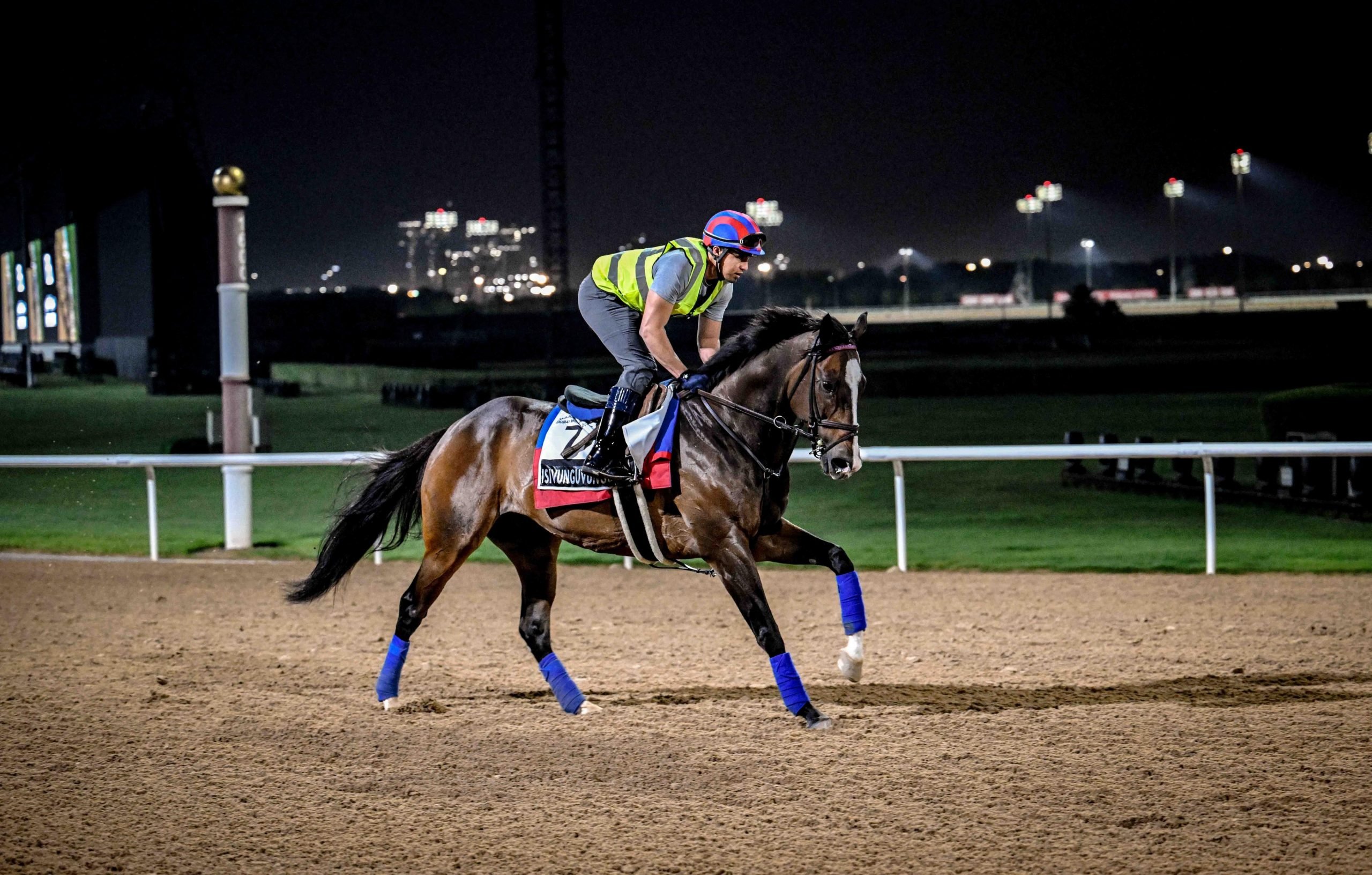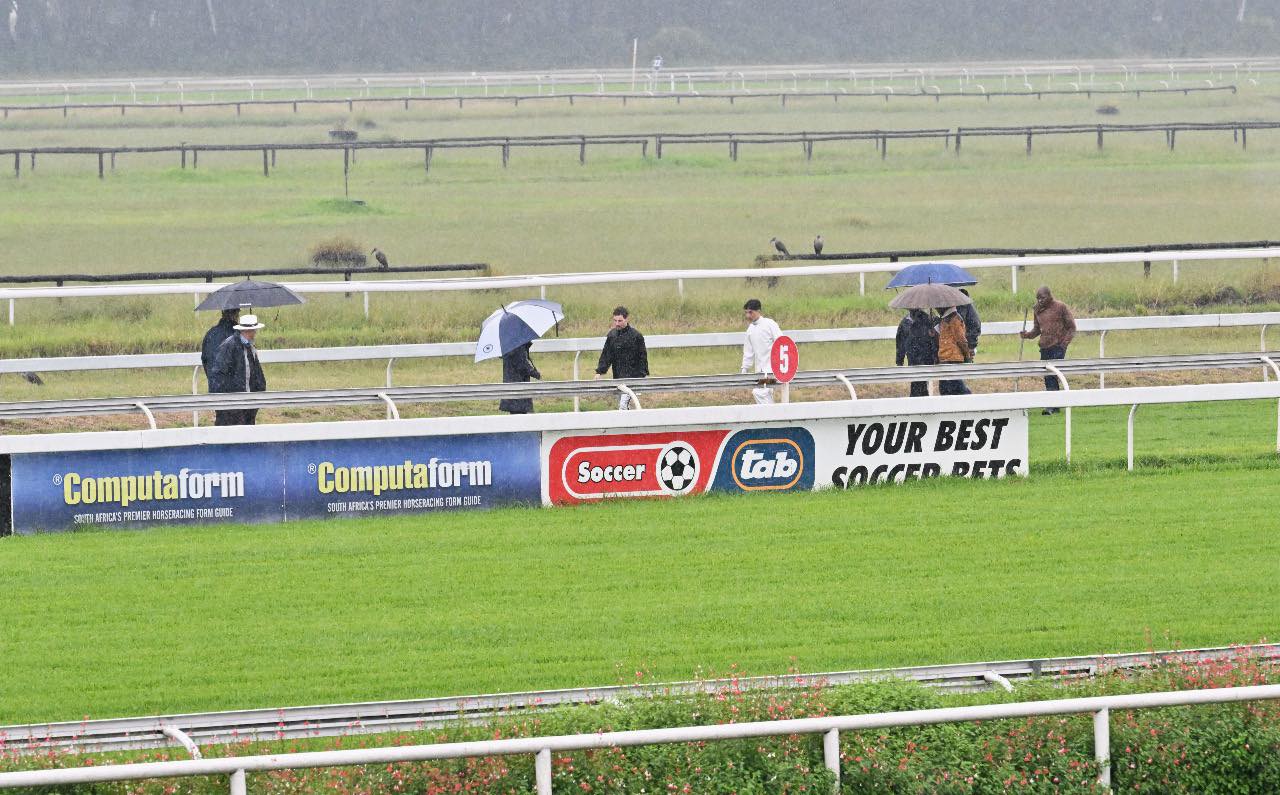Please allow us the opportunity to respond to the totally inaccurate article published on your website in regards to jockey Jarred Samuel on Friday night, writes Peter Myles, Manager of EMS.
It is a great pity that they never contacted anyone to get the true facts regarding this incident.
Background Information
 We have a dedicated team of paramedics that have been serving the Gold Circle events for many years. At every event, the ambulance is on site 1 hour before hand in case of traffic hold-ups or other unforeseen situations.
We have a dedicated team of paramedics that have been serving the Gold Circle events for many years. At every event, the ambulance is on site 1 hour before hand in case of traffic hold-ups or other unforeseen situations.A second ambulance is always on standby, as well as a response vehicle, just in case something happens to the dedicated vehicle or staff whilst they are on the way to the race. The ambulance is at all times manned by a ADVANCED LIFE SUPPORT paramedic as well as a Basic Life Support Paramedic.
The staff on duty on Friday have been at this particular track for many years (ALS – 6 years, BLS 2 years). The ambulance is equipped to full Advanced Life Support level, which includes all the normal ambulance equipment, with jump bags as well as a ventilator and cardiac monitor. Included is full spinal immobilization equipment, as well as two sets of cervical collars.
Our vehicle has on several occasions been inspected at the track without forewarning and has always complied with these requirements. We welcome any inspection, at any time. The paramedics used are operational on the road when not at the races, and are exposed and highly experienced to everyday severe accidents and injuries, and have been doing this for many years.
On every day of racing, our ambulance follows every race with those two staff. No race has ever started without the ambulance following.
 St Johns ambulance is also on site, however they are responsible for the First Aid room, and have staff that have a Basic Ambulance Assistant qualification. A Doctor is also at the event, and is overall in charge of all medical situations, available over the radio at all times.
St Johns ambulance is also on site, however they are responsible for the First Aid room, and have staff that have a Basic Ambulance Assistant qualification. A Doctor is also at the event, and is overall in charge of all medical situations, available over the radio at all times.Should a member of the audience require any sort of help, they would go to the First Aid Station. Should there be a injury on the track, before, during or after the actual race, the patient will receive immediate attention. Stable patients are moved to the First Aid room once treated on the track where they will either be treated by the St Johns staff and the Doctor if needed, and await for a outside ambulance to transport them to hospital. This allows the track ambulance to be next to the track in time for the next race.
However, if the injury is serious, and any delay could cause further injury to the patient, the ambulance will immediately leave the race with the patient whilst another ambulance is rushed to cover the event. This might delay the start of the next race. However, no race will start without the ambulance next to the track.
Facts On The Day
“The EMS staff are not adequately trained and do not have the equipment to deal with life threatening injuries such as that witnessed by us at Greyville on Friday evening“.
The vehicle fully equipped to Advanced Life support level, with every bit of equipment required. The requirement list can be found on the SAPAESA webpage (South African Private Ambulance and Emergency Services Association), who are responsible for inspecting ALL ambulances in South Africa before a practice license can be issued. As mentioned, the staff are very experienced and highly qualified.
“The injured jockey was gurgling and choking in his own blood and his eyes were rolling in his head, yet the paramedics wanted to sedate him. They seemed panic stricken and clueless,” said an angry family member of a jockey who was riding on the evening.”
This statement shows the total lack of understanding of medical procedures by the writer.
 In order to remove any kind of fluid from the mouth or airway, the Paramedic has to suction the area.
In order to remove any kind of fluid from the mouth or airway, the Paramedic has to suction the area.First line on protection is inserting a airway (oropharyngeal airway / OP airway), that forces the tongue forward and prevents it lying against the back of your airway, typically seen as ‘snoring’. This keeps an open air passage for the air to enter the lungs. However, you have to be pretty unconscious to tolerate this. When you no longer have the ability to cough or swallow what is in the back of your mouth, you will inhale this into your lungs.
This could be saliva, blood or vomit etc. When The Paramedic inserted the OP airway into Jarred’s mouth, however he clenched his teeth together preventing the insertion of this. This creates a problem with whatever is in the mouth that is causing the gurgling, which has to be removed urgently.
Standard practice is to sedate the patient in order to get the muscles to relax, and the jaw to be opens so that he can be suctioned. However, this also causes the GAG reflex to disappear, so the patient has to be intubated to protect the airway.
This is exactly what the hospital does, and has been doing to him over the weekend, by placing him into a drug induced coma. This prevents the patient from fighting the machines, etc. This has to be done in a predetermined manner. What might seem panic stricken and clueless is a well rehearsed procedure.
This was not made any easier by the fact that Jarred was extremely restless and ripped out the first drip that was set up, and the large crowd that had gathered. At this stage, a transport ambulance had already been called by the crew at the race.
“St John Ambulance man a public first-aid facility under the main stand and their staff were not involved in the incident. This was confirmed by an official from their Durban office, who said that they were not involved directly in jockey emergencies, which was the responsibility of the EMS.”
“We have had a longstanding association with horseracing, but have two volunteers manning a facility. We would obviously assist where we could, but my staff have confirmed that they were not called to the scene of the accident,” he said.”
The St Johns staff are volunteers, not professionals, and have at most basic training. Legally they cannot even transport a stable patient with a drip up. However, they perform a vital role at the events.
“Samuel’s silks and safety vest were removed by a jockey’s wife and he was placed on his side by her in the process of stabilisation.“
Again, this is totally incorrect. The silks and vest were in fact cut off Jarred by our Paramedic, Surina Maganlal herself.
 This was done, prior to turning Jarred on his side, in order to examine his spine and back for any injuries or wounds, as well as to allow the fluids in his moth to drain, whilst the sedation took effect.
This was done, prior to turning Jarred on his side, in order to examine his spine and back for any injuries or wounds, as well as to allow the fluids in his moth to drain, whilst the sedation took effect.During this entire time, there was someone holding his head in line with his spine in order to make sure there was no movement of his cervical spine, just in case there was a cervical spinal injury.
“The on-course doctor arrived without his medical bag and said that he didn’t think to bring it,” she said.”
The Doctor has to cater for all types of situations and medical cases. Our ambulance has two jump bags, one equipped to Intermediate Life support, and one Jump Bag equipped to Advanced Life Support, which also includes all resuscitation drugs.
Any Advanced Life practitioner has access to this bag, as well as any doctor who requests them. They are far bigger and better equipped than any doctors bag, and are specifically equipped for trauma. Unlike a doctor, that is all we do. A doctor has to treat everything, right down to looking into someone’s ear, diagnose a fever, headache, swollen legs, etc.
I can assure you that whatever the doctor needed for this emergency was available to him from our bag.
 “She added that the polytrack was ‘bloody hard’ too.”
“She added that the polytrack was ‘bloody hard’ too.”
“The configuration of the track means the ambulance has to go all the way around the track again as it cannot make a u-turn,” said another bystander. A trained medical person who witnessed the event, but wishes to remain anonymous for professional reasons, said that what should have taken ten minutes, took roughly three times as long.”
Again, this is totally inaccurate. The video footage of this incident will bear testimony to this.
The moment the jockey fell, the vehicle stopped on the tar that runs next to the track and the Advanced Life Support paramedic exited the vehicle and ran to the jockey. The second ambulance crew opened the back and carried the equipment to the patient and the paramedic.
Once the patient was stablilized and packaged for transport it proceeded to the TOTE board, through the golf parking area and onto the track, stopping next to the patient to load. This should have ‘taken 10 minutes, instead it took 3 times as long?” 30 minutes to take a ambulance onto the track? Highly unlikely. It might have taken 30 minutes to treat, stabilize and package the patient, but that is why you have trained and qualified staff, rather than just throw the patient on a stretcher and race off to hospital. As per the patient report form (attached) it took 18 minutes from the time of the incident until leaving the track with the patient.
“The doctor should have intubated him up front – that is the basic process. Yet he kept saying it was ‘touch and go’. The first aid-kit had to be used to prop Jarred’s head up and the cervical collar was not available immediately. I don’t want to knock fellow medical personnel unnecessarily, but really it was a poor show from start to finish…the doctor should have arrived with his torch and stethoscope as basic procedure.“
 The paramedic had all the equipment in the vehicle. Earlier in the report it was mentioned that the patient was gurgling and why the patient could not be intubated immediately. As soon as the sedation took effect, the patient was intubated.
The paramedic had all the equipment in the vehicle. Earlier in the report it was mentioned that the patient was gurgling and why the patient could not be intubated immediately. As soon as the sedation took effect, the patient was intubated.This equipment came from our ambulance. This same equipment is fitted with a torch in the front in order to illuminate the vocal chords when intubating. This same torch is used to shine in the patients pupils to see if they react to light. This is the only purpose of the torch. Once the sedation kicks in, the pupils relax and don’t react in any case. We have 2 stethoscopes available in the ambulance. At all times a medic held onto Jarred’s head until such time that the cervical collar was applied. The writer claims that no collar was available, which is a blatant lie. It might not have been inside the overstuffed jump bag, but the ambulance is equipped with 2 sets of collars, 6 in total.
“It has also emerged that the Greyville Ambulance is not adequately equipped with life support apparatus to deal with an injury such as that suffered by Samuel and that it was held up in traffic en route to the hospital as it had no siren.“
All equipment came from the ambulance.
The vehicle is inspected and equipped to full advanced life support level. Racing to a hospital with sirens on has not happened since 1980. With the level of training and equipment in the vehicle, the patient receives the same treatment on site as he would in a casualty unit. The patient is stabilized on scene and transported.
It is not possible to monitor and care for a patient that is slamming on brakes and racing through intersections, changing lanes and throwing the patient and attendant around in the back of a vehicle.
 This is even more important where there is a chance of a spinal injury. A smooth, stable and controlled trip to hospital is required. Everything the patient needs is with him in the vehicle. The vehicle is also most at risk when flying through intersections with sirens on. Most accidents happen here.
This is even more important where there is a chance of a spinal injury. A smooth, stable and controlled trip to hospital is required. Everything the patient needs is with him in the vehicle. The vehicle is also most at risk when flying through intersections with sirens on. Most accidents happen here.“In a further potentially life threatening time-wasting administrative bungle, the stock of an authorisation form meant to accompany the patient was also depleted after the start handler Mike Shaw had been kicked in the chest a week earlier – and the last form had been used for his case and not replenished.“
We are not sure that this form refers to. If it is our patient report form, please see the attached Patient Report Form. The top number is our serial number. Books are printed in triplicate, in batches of 50, and this was defiantly not our last form.
“The whole show is just not good enough and smacks of incompetence and amateurism. Gold Circle management are aware of it from previous incidents. Do they care? Certainly not on what we saw on Friday evening,” said a jockey’s mother, who confirmed that there was no action on the part of the racing operator when the issues had been raised previously.“
 Every incident has been fully investigated. As always, we are happy to meet and discuss any event, the paramedics are happy to bring their side of the event, and our vehicles remain accessible to anyone to inspect at any time.
Every incident has been fully investigated. As always, we are happy to meet and discuss any event, the paramedics are happy to bring their side of the event, and our vehicles remain accessible to anyone to inspect at any time.We have always given every requirement that Gold Circle requests, and consider them to be way ahead in their planning and preparedness towards any incident that might happen.
“The good news to emerge from sources close to the Samuel family is that Jarred’s condition has stabilised after spending much of the weekend in an induced coma and he has no broken bones.“
Please see the attached copy of today’s newspaper. Jarred was kept in an induced coma for the entire weekend. This is exactly what we did on the track, before intubating him and packaging him BEFORE transporting him to hospital.
CONCLUSION
I have absolutely no doubt that there is an ulterior motive behind this report. It is based on misinformation and blatant lies.
At no stage was the patient exposed to any risk at any stage, and received the best possible treatment from the time of his fall right up to the delivery at the hospital. We normally make use of Citimed Ambulance service for the transportation from Greyville, as they are based right next to the track.
However, being a Friday night, and just after payday, all their ambulances were out.
5 additional ambulances were contacted, but all were busy.
ER24 eventually managed to send a vehicle from Pinetown, but in the interest of the patient, it was decided to transport the patient and use the ER24 ambulance to cover the race until our vehicle returned to the track.
 We are more than happy to sit with the family, Gold Circle as well as the ‘medic’ who has made these accusations. We are passionate about what we do.
We are more than happy to sit with the family, Gold Circle as well as the ‘medic’ who has made these accusations. We are passionate about what we do.We don’t run EVENT MEDICAL SERVICES as a part time business. It is a dedicated stand-alone company with passionate staff. We have a dedicated fleet of 12 ambulances, that are specific to the requirements of the event.
Hoping that this sets the records straight. Please feel free to contact us at any time should you need further clarity or further information.








